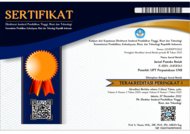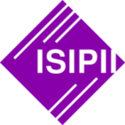Pengaruh Perpustakaan Perguruan Tinggi Keagamaan Negeri terhadap Preferensi Buku Bacaan Mahasiswa
Abstract
The State Religious College Library plays a significant role in shaping students' reading material preferences. This study aims to explain the influence of the State Religious College Library on the reading book preferences of students at the Raden Mas Said State Islamic University of Surakarta, the Raden Wijaya State Buddhist College of Wonogiri, Central Java, and the I Gusti Bagus Sugriwa State Hindu University of Denpasar, Bali. This study uses a quantitative explanatory method by taking a sample of 83 students through accidental sampling techniques. Data collection using a literature study questionnaire and observation. As well as data analysis techniques using the help of statistical tools, SPSS IBM V25. The results of the study indicate that there is an influence between the State Religious College Library represented by the Raden Mas Said State Islamic University Library of Surakarta, the Raden Wijaya State Buddhist College of Wonogiri, and the I Gusti Bagus Sugriwa State Hindu University of Denpasar, Bali on students' reading book preferences with a significance value of 0.000 <0.005 and has an influence value of 24.2%. Reading materials that are often borrowed at each university are books on Islamic themes such as Fiqh Muamalah at UIN Raden Mas Said Surakarta, books on Buddhism such as the Philosophy of Buddhism at the Raden Wijaya State Buddhist College in Wonogiri, and books on Hinduism such as the Philosophy of Hinduism at the I Gusti Bagus Sugriwa State Hindu University in Bali.
Keywords
Full Text:
PDFReferences
Adetayo, A., Alawiye, M. K., Emmanuel, S. O., Omotoso, A. O., & Bello, T. O. (2024). Exploring University Students’ Library Engagement: Reading Habits, Preferences, and Gender Dynamics. Journal of Digital Learning and Education, 4(1), 15–29. https://doi.org/10.52562/jdle.v4i1.883
Afnella, G. T., & Rahma, E. (2025). Peran Inovasi Teknologi dalam Mewujudkan Akses Informasi Secara Modern di Perpustakaan Universitas Negeri Padang. PERKAMEN: Perpustakaan, Informasi, Sosial, Dan Humaniora, 2(4), 1–17. https://journal-uim-makassar.ac.id/index.php/perkamen/article/view/1523
Aiman, U., Abdullah, K., Jannah, M., Hasda, S., Fadilla, Z., Masita, Taqwin, Sari, M. E., Ardiawan, K. N. (2022). Metodologi Penelitian Kuantitatif. Aceh: Yayasan Penerbit Muhammad Zaini.
Aini, N., Herdina, G. G. H., & Nasrullah, N. S. (2023). (GARY) Game-Library: Digital Library Game Based on Augmented Reality to Realize The Golden Indonesian Generation in 2045. International Conference on Education, 25–32.
Aithal, S., & Aithal, P. S. (2023). Effects of AI-Based ChatGPT on Higher Education Libraries. International Journal of Management, Technology, and Social Sciences (IJMTS), 8(2), 1–13. http://dx.doi.org/10.2139/ssrn.4453581
Aparicio-Gómez, O. Y., Ostos-Ortiz, O. L., & Abadía-García, C. (2024). Convergence between Emerging Technologies and Active Methodologies in the University. Journal of Technology and Science Education, 14(1), 31–44. https://doi.org/10.3926/jotse.2508
Budiarto, D. (2023). Perpustakaan Sebagai Pusat Sumber Belajar Bagi Peserta Didik Jambura Journal of Educational Management. Jambura Journal of Educational Management, 4(1), 234–244. https://doi.org/10.31004/basicedu.v8i3.7784
Camilleri, M. A. (2021). Evaluating service quality and performance of higher education institutions: a systematic review and a post-COVID-19 outlook. International Journal of Quality and Service Sciences, 13(2), 268–281. https://doi.org/10.1108/IJQSS-03-2020-0034
Dewi, S. P. (2022). Buku cetak dan digital: preferensi membaca bacaan nonfiksi di kalangan peneliti dan akademisi. Baca: Jurnal Dokumentasi Dan Informasi, 43(2), 81–94. https://doi.org/10.14203/j.baca.v43i2.867
Dewida, R. M., Bongguk, H., & Ulung, N. (2023). Pelaksanaan Kegiatan Literasi dan Numerasi bagi Peserta Didik Kelas Tinggi Sekolah Dasar. Jurnal Serunai Administrasi Pendidikan, 12(2), 82–91. https://ejournal.stkipbudidaya.ac.id/index.php/jc/article/view/1005%0Ahttps://ejournal.stkipbudidaya.ac.id/index.php/jc/article/download/1005/608
Exline, J., Bradley, D. F., Wilt, J. A., & Stauner, N. (2020). Pulling Away from Religion: Religious/Spiritual Struggles and Religious Disengagement among College Students. Psychology of Religion and Spirituality, 14(3), 1–31. https://doi.org/10.1037/rel0000375
Hidayat, M., & Sukari. (2019). Relevansi Kurikulum Pendidikan Agama Islam di Madrasah dengan Kebutuhan Dunia Kerja. Moral: Jurnal Kajian Pendidikan Islam, 2(1), 39–49. https://doi.org/10.61132/moral.v2i1.483
L. M. Singer, & Alexander, P. A. (2017). Reading on Paper and Digitally: What the Past Decades of Empirical Research Reveal. Review of Educational Research, 87(6), 1007–1041. https://doi.org/https://doi.org/10.3102/0034654317722961
Mahmudulhassan, Waston, Muthoifin, & Khondoker, S. U. A. (2024). Understanding the Essence of Islamic Education: Investigating Meaning, Essence, and Knowledge Sources. Solo Universal Journal of Islamic Education and Multiculturalism E, 2(1), 27–36. https://doi.org/10.61455/sujiem.v2i01.115
Mahoni, Putu Ahara & Triningsih. (2023). Analisis Kualitas Pelayanan Perpustakaan Politeknik Internasional Bali dan UPT. Pusat Perpustakaan UIN Raden Mas Said Surakarta. Visi Pustaka, 25 (2). https://doi.org/10.37014/visipustaka.v25i2.4091
Moonasar, A. (2024). Continuing professional development and the changing landscape of academic libraries. Library Management, 45(3–4), 226–242. https://doi.org/10.1108/LM-09-2023-0100
Munandar, D. I. (2019). Format cetak vs digital: Preferensi membaca bahan bacaan akademik mahasiswa Pascasarjana Universitas Indonesia. Pustakaloka, 11(2), 82–97. https://doi.org/10.21154/pustakaloka.v11i2.1620
Mustaufiy, A. S. H., & Sadat, A. (2020). Analisis Preferensi Mahasiswa terhadap Penggunaan Kamus dalam Mempelajari Bahasa Arab. Al-Af’idah, 4(1), 1–17. https://doi.org/10.52266/al-afidah.v4i1.462
Oktapia, M. (2025). Pelaksanaan Kegiatan Bimbingan Kelompok (Bingkel) Pemustaka pada Layanan Referensi di UPT Perpustakaan IAIN Curup dalam Mendukung Tri Dharma Perguruan Tinggi.
Pratama, B. I., Pratama, M. R., & Sekti Ari, D. P. (2023). Mendeley untuk Semua: Sosialisasi Penggunaan Mendeley untuk Penulisan Akademik dan Non Akademik. Jurnal Pengabdian Masyarakat (ABDIRA), 3(3), 43–52. https://doi.org/10.31004/abdira.v3i3.347
Rasdanelis. (2013). Perpustakaan perguruan tinggi; telaah tujuan dan fungsi. Buletin Perpustakaan UIN SUSKA Riau.
Suharso, P., Arifiyana, I. P., Mizati, D., & Wasdiana, D. (2020). Layanan Perpustakaan Perguruan Tinggi dalam Menghadapi Pandemi Covid-19. ANUVA, 4(2), 271–286. https://doi.org/10.14710/anuva.4.2.271-286
Tien, N. H., Ngoc, N. M., Trang, T. T. T., Duc, L. D. M., & Mai, N. P. (2022). Sustainable Development of Higher Education Institutions in Developing Countries: Comparative Analysis of Poland and Vietnam. Contemporary Economics, 16(2), 195–210. https://doi.org/10.5709/ce.1897-9254.477
Uyuni, B., & Program, P. (2024). Philosophical Foundations in Training Traditional Religious Educators: Bridging Past and Present. Futurity Philosophy, 3(4), 40–65. https://doi.org/10.57125/fp.2024.06.30.03
Wicaksono, M. F., Al As’Hal, A. ‘Azhim, & Attri, R. K. (2023). The effect of library exterior design building on increasing student’s personal branding through selfie. Record and Library Journal, 9(2), 172–186. https://doi.org/10.20473/rlj.V9-I2.2023.172-186
Zhou, J. (2022). The role of libraries in distance learning during COVID-19. Information Development, 38(2), 227–238. https://doi.org/10.1177/02666669211001502
DOI: https://doi.org/10.20961/jpi.v11i1.100286
Refbacks
- There are currently no refbacks.

This work is licensed under a Creative Commons Attribution-NonCommercial-ShareAlike 4.0 International License.




.png)
.png)









1.jpg)
